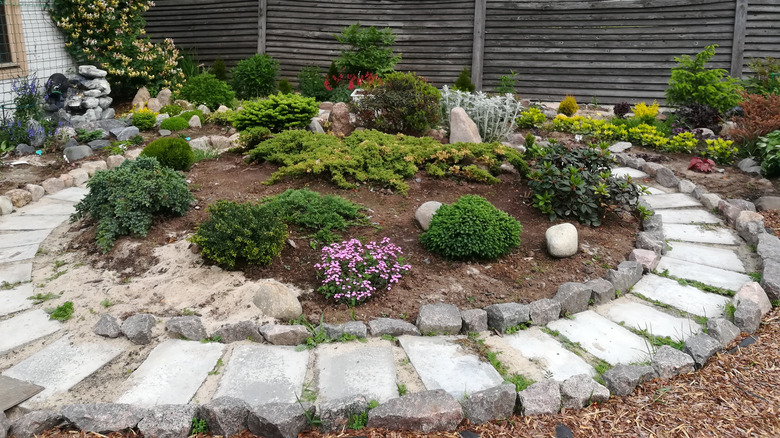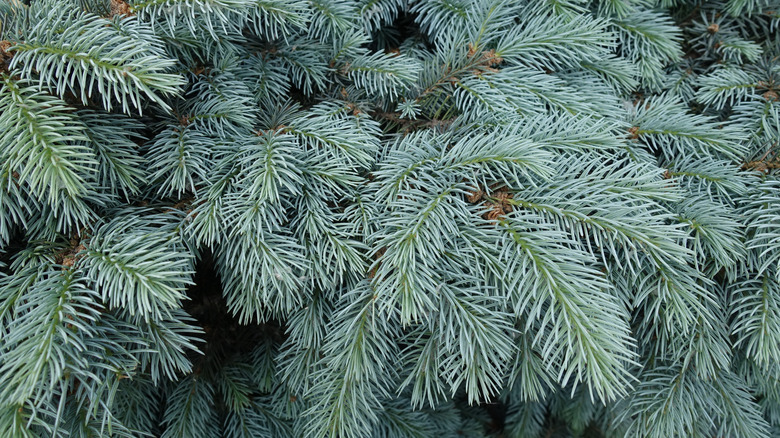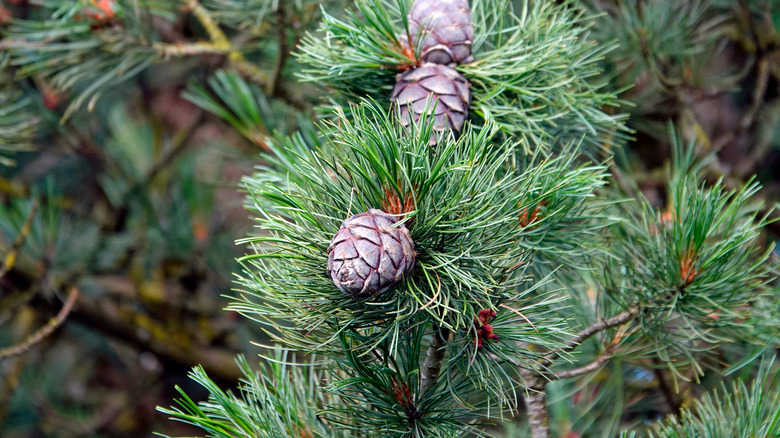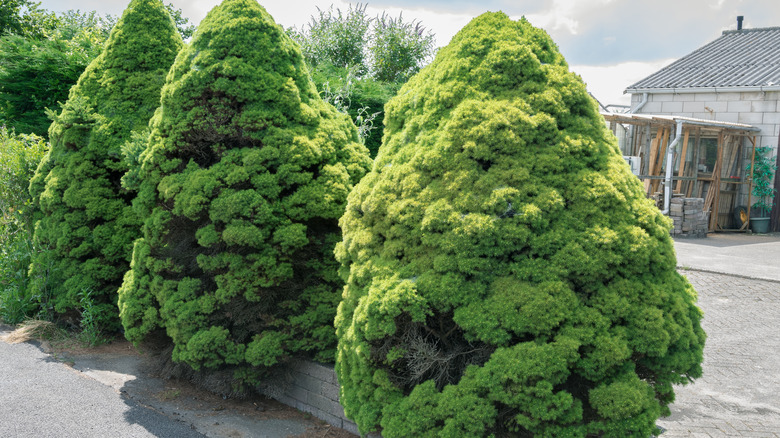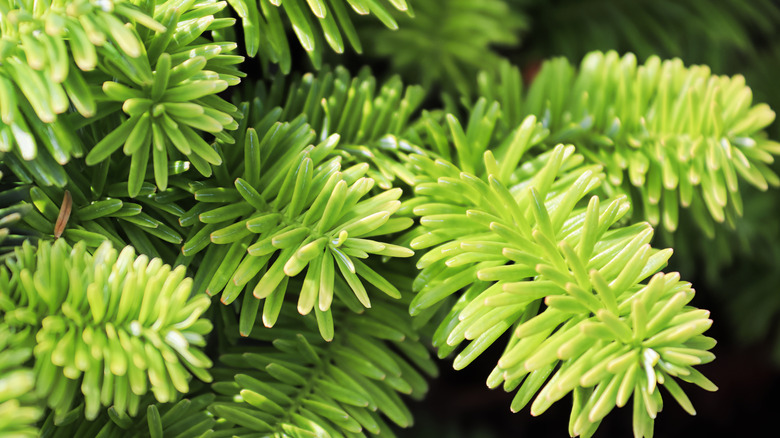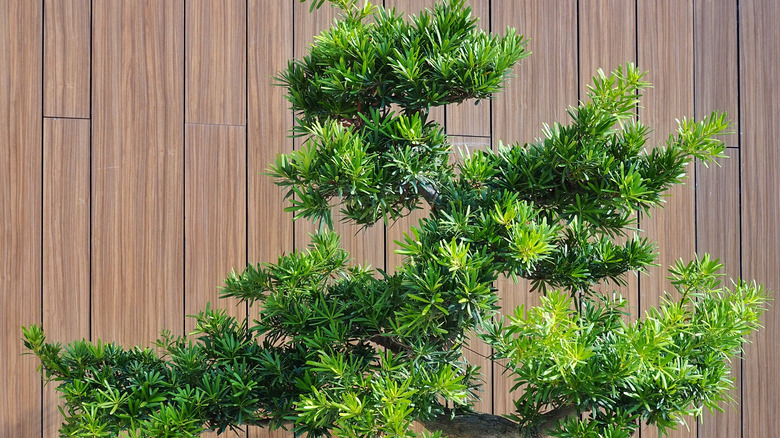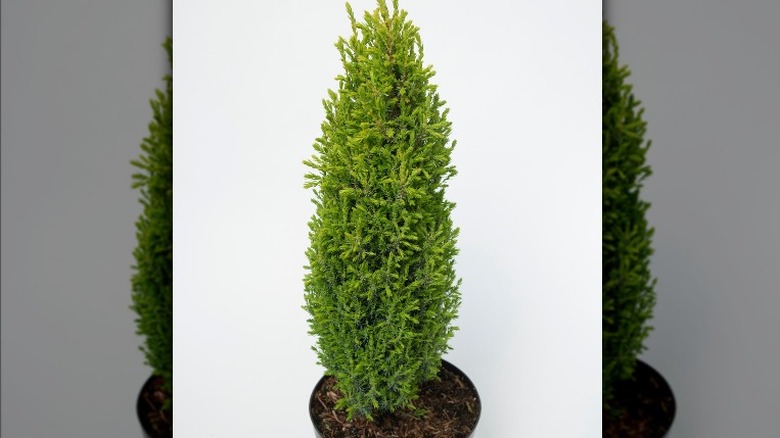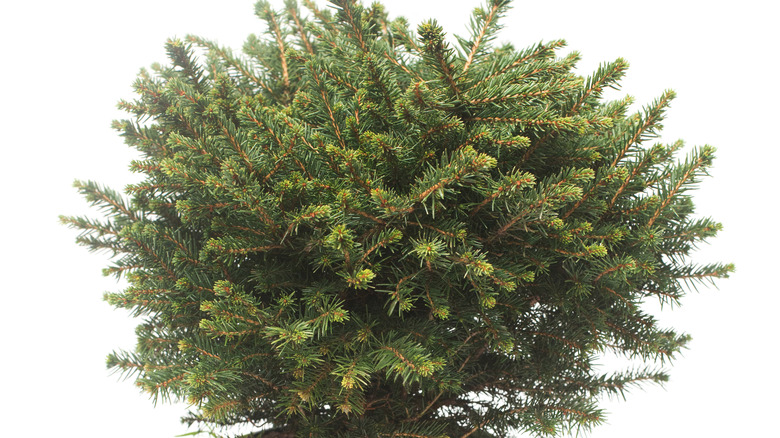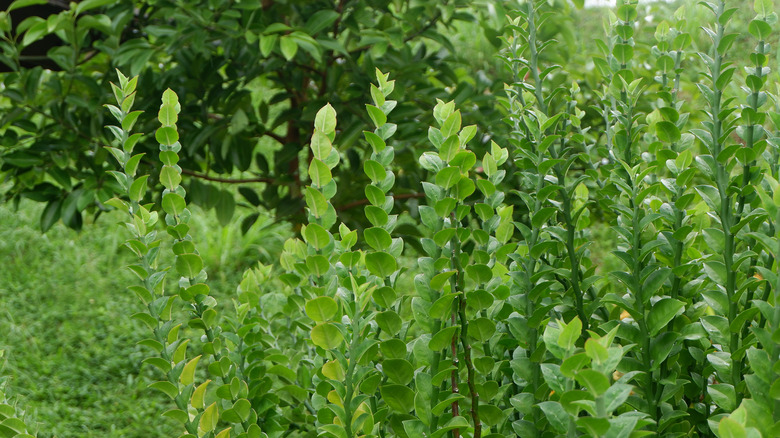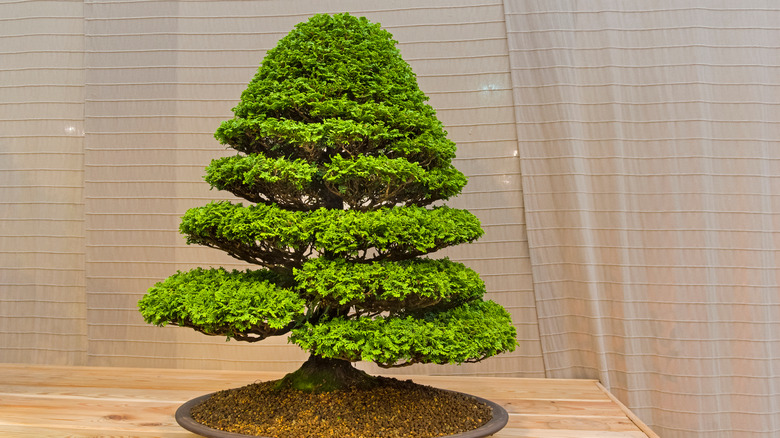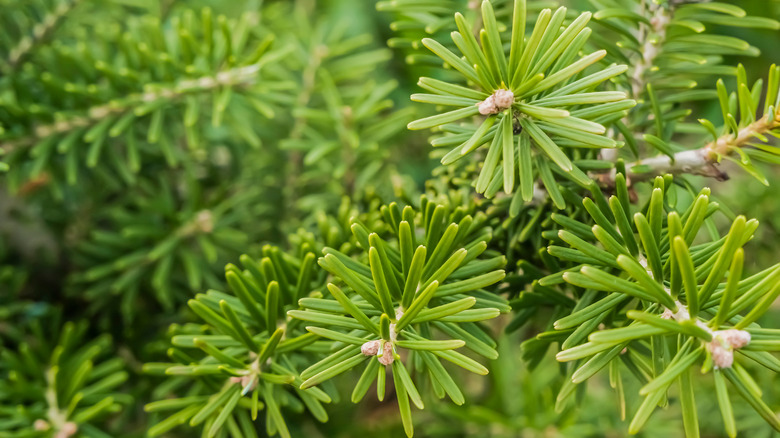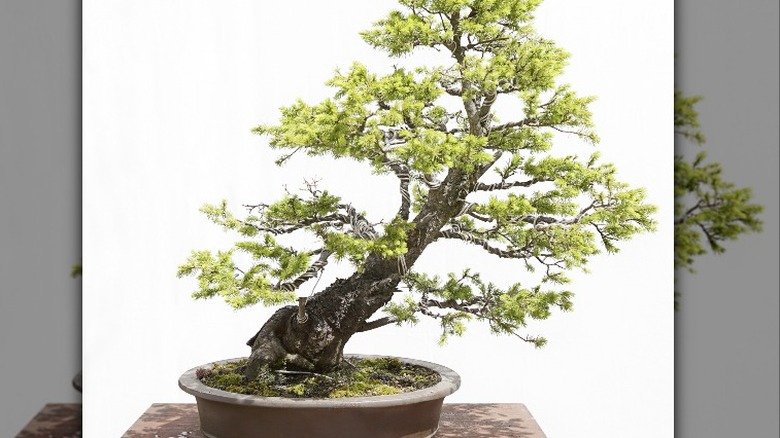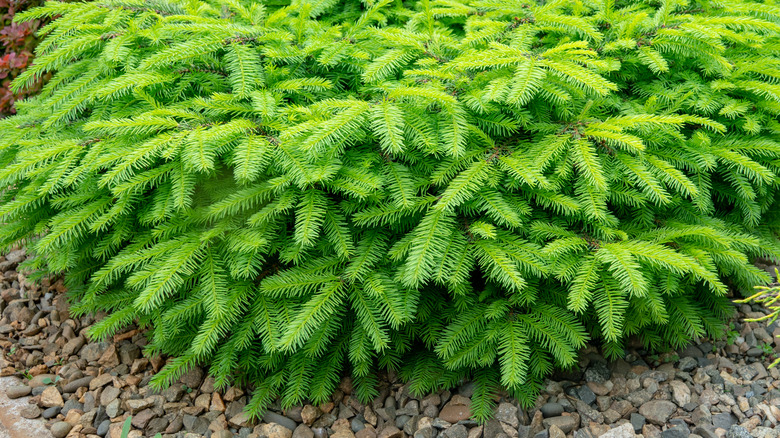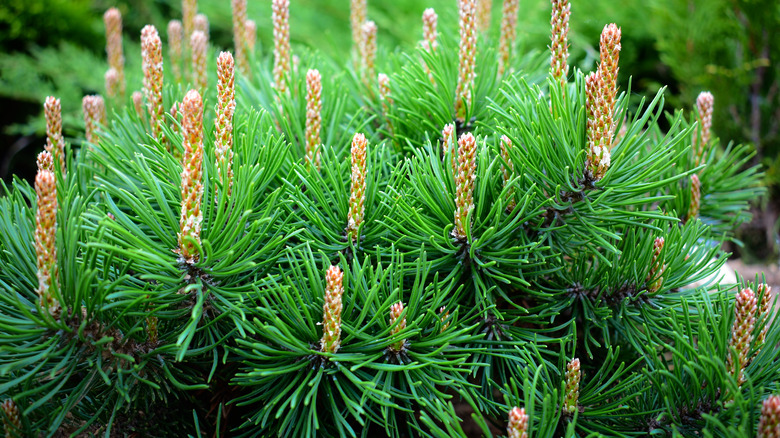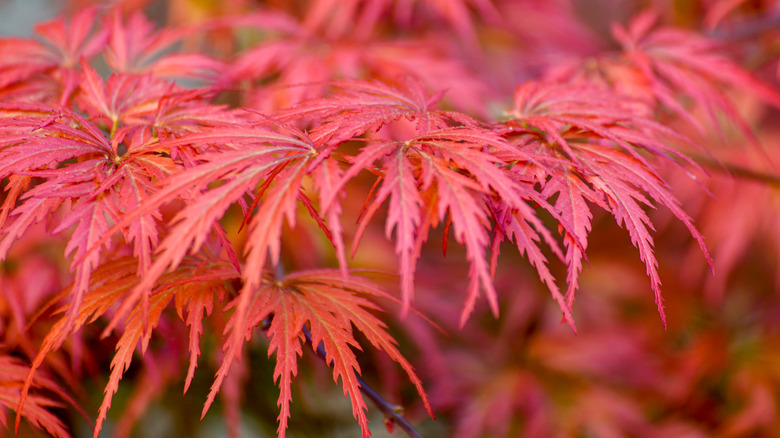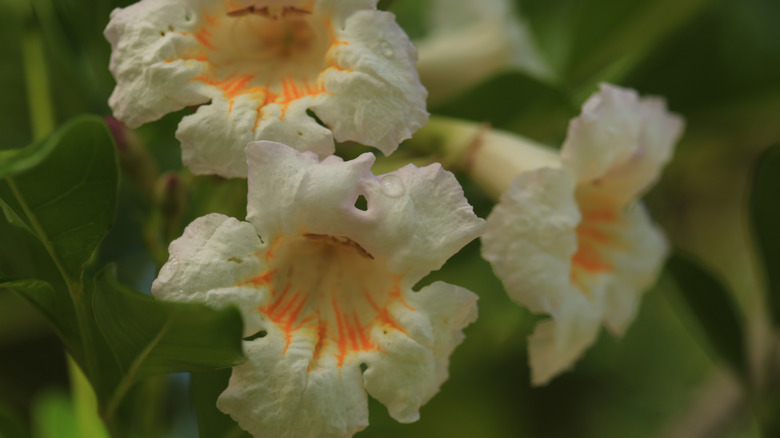15 Dwarf Pine Trees That Won't Take Over Your Yard
Flowers are a great addition to your garden, but if you're looking for a bit of privacy and seeking to keep your property off trespassers, they just won't cut it. Think of it this way, flowers are princesses, and you need guards. To that effect, we have got a little something for you. We like to refer to them as small but mighty decorative plants that add a touch of color, fragrance, and beauty to your yard. Yes, you guessed right, pine trees.
Contrary to popular opinion, pine trees are an even better fit or pick for dwarf trees. Why? It's pretty interesting to note that dwarf pine trees are perfect for small spaces, including flower pots, requiring low maintenance, says Leafy Place. In addition, the compact nature of these trees makes it easier to prune without fear of taking over your yard and space like some invasive trees.
The list of available dwarf pine trees is endless, and you get a lot of choices trying to select the best for your yard. If you already have some dwarf fruit trees planted in your garden, why not consider these perfect blends? Great for the gardener's bragging rights, trust us. Unsure which pine trees to plant? We have compiled an A-list of all the most elegant pine trees just for you!
1. Colorado blue spruce
The blue spruce tree (Picea pungens) is a dwarf pine tree native to colorado, via the Iowa State University Extension and Outreach. The blue weeping spruce is an evergreen plant with silvery blue needles. It grows, spreading downwards, forming a skirt-like shape, says Meadows Farms Nurseries & Landscape. According to the Nebraska Forest Service, the blue weeping spruce requires low maintenance and is beautiful to your environment.
Bloom Season: Spring
USDA Growing Zone: 2 to 8
Growing Conditions: Full sun
Soil Type: Acidic, well-drained
Size: 5 to 10 feet tall, 5 to 10 feet wide
2. Chalet Swiss stone pine
The chalet Swiss stone pine (Pinus cembra) is another popular dwarf pine tree native to central Europe and grown for its attractive silvery-blue needles, says the Missouri Botanical Garden. According to Nature Hills Nursery, it grows rigidly columnar and produces purplish-brown oblong cones when fully matured. The Swiss chalet is easy to maintain and perfect when situated around door entrances, via Happy DIY Home.
Bloom Season: Spring
USDA Growing Zone: 3 to 7
Growing Conditions: Full sun
Soil type: Sandy loams, well-drained
Size: 5 to 8 feet tall, 2 to 4 feet wide
3. Dwarf Alberta spruce
Looking for a replica of a small Christmas tree in your compound? The dwarf Alberta spruce (Picea glauca 'Conica') is a perfect smaller Christmas tree for you, via Monrovia. The dwarf Alberta spruce is sometimes known as white spruce, says the National Gardening Association. As an evergreen plant, your garden and driveway will sure stay shining all year round, writes My Garden Life.
Bloom Season: Late spring, early fall
USDA Growing Zone: 2 to 8
Growing Conditions: Full sun, part shade
Soil Type: Moist, Well-drained
Size: 8 feet tall, 5 feet wide
4. Dwarf balsam fir tree
The dwarf balsam fir tree (Abies balsamea 'Nana') is one of the most beautiful dwarf trees native to North America, via Oregon State University. The balsam fir tree brightens your garden with its shiny, dark green leaves and aromatic needles growing in globe cluster form, says Big Boy Plants. Although the balsam fir tree is a slow grower, it blooms in your garden all year, writes Paramount Plants and Gardens.
Bloom Season: Summer, spring, fall, winter
USDA Growing Zone: 3b
Growing Conditions: Full sun, part shade
Soil Type: Acidic, moist, well-drained
Size: 24 inches tall, 3 feet wide
5. Japanese black pine tree
According to the Triangle Gardener, the Japanese black pine (Pinus thunbergii) is one worth growing in your garden. Although the tree is native to North Carolina, it adapts well and thrives in other regions around the world, says the Bonsai Outlet. You'd appreciate seeing this irregularly pyramid-shaped tree with green needles beautifying your landscape, via PictureThis.
Bloom Season: Spring
USDA Growing Zone: 5 to 8
Growing Conditions: full sun
Soil Type: Moist, well-drained
Size: 20 to 60 inches tall, 6 to 18 meters wide
6. Dwarf pencil point juniper
The pencil point juniper (Juniperus communis) belongs to the Cupressaceae family and is native to the Arctic Circle, says the North Carolina Extension Gardener Toolbox. It is also more valued and adds more expression to your landscape with its columnar form of growing, says Canadale Nurseries Ltd. If you're looking for a miniature tree to stand slightly tall in your space, this is it right here.
Bloom Season: Spring
USDA Growing Zone: 2 to 6
Growing Conditions: Full sun
Soil Type: Well-drained
Size: 6 inches fall, 1 inch wide
7. Dwarf Serbian spruce tree
The Serbian spruce tree (Picea omorika) belongs to the Pinaceae family and is native to the Serbia region, says The Morton Arboretum. This tall, slim dwarf tree grows shiny, dark green needles with purple cones that serve as food for birds and other mammals, per the PennState Extension. A great discovery about this tree is its citrus fragrance produced after crushing the cones, via the University of Minnesota.
Bloom Season: Late summer
USDA Growing Zone: 4
Growing Conditions: Full sun, part shade
Soil type: Well-drained
Size: 50 feet tall, 15 feet wide
8. Japanese spindle tree
This Japanese spindle tree (Euonymus japonicus) is one of the best dwarf trees that'll add beauty to your yard and maintain your privacy, says Monrovia. Its evergreen dark green leaves are sure to stand out among other flowers, per the Missouri Botanical Garden. In addition, Big Boy Plants states that the leaves change color from green to purple during the fall season. What's not to love about stunning changing sceneries?
Bloom Season: Spring
USDA Growing Zone: 6 to 9
Growing Conditions: Full sun, part shade
Soil Type: Moist, well-drained
Size: 14.5 feet tall, 6 feet wide
9. Hinoki cypress
Hinoki cypress (Chamaecyparis obtusa) is another ornamental dwarf tree, home to Japan, says the North Carolina Extension Gardener Toolbox. Britannica categorizes the tree as one of the most valuable Japanese timber used for different purposes. Although the tree is prone to attacks from specific pests, Bonsai Empire experts write that it can be controlled with pesticides.
Bloom Season: March to April
USDA Growing Zone: 5 to 8
Growing Conditions: full sun
Soil Type: Moist, well-drained
Size: 40 to 75 feet tall, 10 to 20 feet wide
10. Korean fir
With the Korean fir (Abies koreana) in your garden, you'll enjoy its bliss and burst of colors. The Korean fir is native to South Korea, says iNaturalist. It grows well in a pyramid form and produces purple cones on its branches, states Treehouse. It's a great ornamental plant that grows slowly and requires medium maintenance, via the Arnold Arboretum of Harvard University.
Bloom Season: Spring, summer, winter, fall
USDA Growing Zone: 5 to 7
Growing Conditions: Full sun, part shade
Soil type: Acidic
Size: 15 to 30 feet tall, 6 to 12 feet wide
11. North Star white spruce
The North Star white spruce (Picea glauca 'North star') is mainly known for its complex resilience against harsh conditions, says Gertens. This ornamental dwarf tree serves well as a loner in the garden or can be used to form a barrier when in groups, via Iseli Nursery. According to Nature Hills Nursery, these ornamental trees are generally compact and can be pruned to a topiary form
Bloom Season: Spring
USDA Growing Zone: 3a
Growing Conditions: Full sun, part shade
Soil type: Moist, well-drained
Size: 4 feet tall, 12 feet wide
12. Norway spruce
According to the Woodland Trust, these trees can last for a thousand years without losing their beauty and essence. The Norway spruce (Picea abies) produces needle-like leaves with white speckled lines and red-brown diamond-shaped cones, per the Yale Nature Walk. Aside from the beautification of your yard, the wood of Norway spruce is a great choice for furniture makers, says bplant.
Bloom Season: June
USDA Growing zone: 3 to 7
Growing Conditions: Full sun
Soil type: Acidic, well-drained
Size: 40 to 60 inches tall, 25 to 30 inches wide
13. Mugo pine
According to Bellarmine University, mugo pine (Pinus mugo) is native to the European Alpine area and more dominant in regions situated at high altitudes. An interesting fact is that mugo pine loses its needles once every four years, via PictureThis, and serves as a good solution for erosion. It has medicinal purposes and is used for native tea in Bulgaria, writes the What Tree Where experts.
Bloom Season: Spring
USDA Growing Zone: 3 through 7
Growing Conditions: Slightly acidic
Soil Type: Well-drained
Size: 20 inches tall, 25 inches wide
14. Japanese maples
The Japanese maple (Acer palmatum) is one dwarf tree that comes with attractive color to your garden. According to the Gardener's Path, Japanese maples are native to Asian countries and have over 1,000 varieties. The tree blooms with purple leaves in other seasons but changes to bright red, orange, and yellow during fall, says Moronvia. They are easy to maintain and attract attention, too, via the Wayside Gardens.
Bloom Season: May, June
USDA Growing Zone: 5 to 8
Growing Conditions: Part sun, full shade
Soil Type: Acidic, well-drained
Size: 15 to 25 inches tall, 20 inches wide
15. Asian bell tree
Asian bell trees (Radermachera sinica) are aesthetically pleasing. According to Evanthia, the Asian bell tree is popularly known as China doll because of its predominance in the country. This dwarf ornamental grows slowly and produces dense green and shiny foliage, says Ellenby Tree Farm. You'll even love the white trumpet-shaped flowers with a touch of yellow and its pleasant fragrance, according to experts at Lucid Key Server.
Bloom season: Late spring to early summer
USDA Growing Zone: 10 to 11
Growing Conditions: Full sun, part shade
Soil Type: Loamy, well-drained
Size: 1 to 3 feet tall, 1 to 3 feet wide
